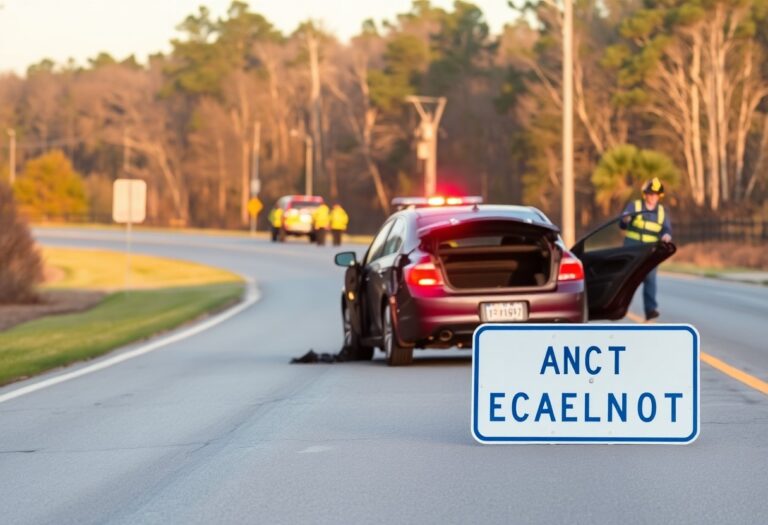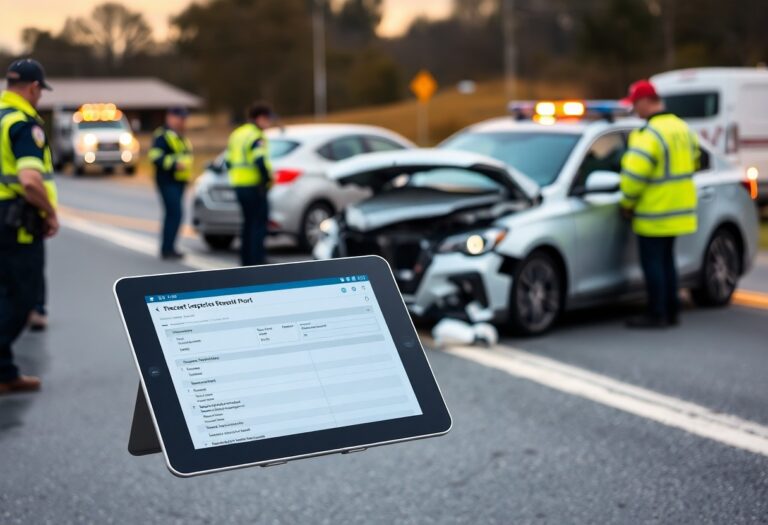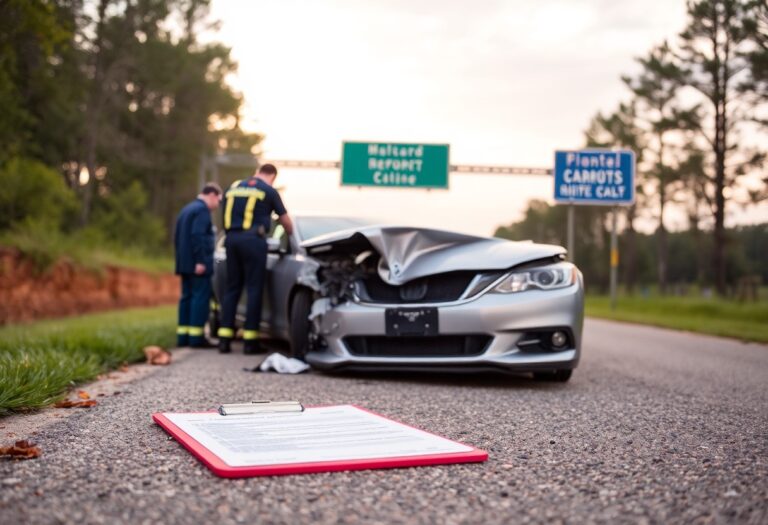Accident reports can be challenging to navigate, especially in the aftermath of a car accident. In Olmsted County, Minnesota, it’s crucial for you to know where to find your report and how it can impact your insurance claims and any legal proceedings. Our guide provides you with detailed information on how to obtain your report, the necessary steps to follow, and the resources available to assist you through this process. With the right guidance, you can ensure that you have everything you need for your recovery and peace of mind.
Unlocking the Car Accident Report Process in Olmsted County
Navigating the car accident report process in Olmsted County can seem daunting, but it is crucial for obtaining vital information following an accident. Understanding the steps involved ensures that you can secure your report efficiently. Once an accident occurs and authorities are notified, the involved parties must provide detailed information, which is compiled into an official report. This report serves as a crucial document for insurance claims, legal proceedings, and personal records.
The Legal Framework for Accident Reporting
In Minnesota, state laws mandate that police officers file an accident report for all crashes resulting in injury, death, or significant property damage. This legal framework is designed to ensure accountability and accuracy in documenting incidents. Your compliance with these laws can help in any subsequent legal matters and validate any claims you may need to file.
Key Agencies Involved in Reports
Several agencies play crucial roles in the car accident reporting process in Olmsted County. The Olmsted County Sheriff’s Office, the Rochester Police Department, and the Minnesota Department of Public Safety collaborate to gather and maintain accurate records. These agencies ensure that every detail is included and that your report is accessible to you, professionals, and other parties involved.
The Olmsted County Sheriff’s Office is typically the first point of contact when accidents occur in unincorporated areas, while city accidents generally fall under the jurisdiction of local police departments. Both agencies are responsible for completing the reports and ensuring all involved parties provide their accounts of the incident. Additionally, the Minnesota Department of Public Safety collects and organizes these reports, maintaining a comprehensive database that can be accessed by the parties involved, used in investigations, and referenced in future legal proceedings. Understanding each agency’s role assists you in knowing whom to contact and how to navigate the process effectively.
Your Step-by-Step Guide to Obtaining Reports
| Step | Description |
|---|---|
| 1 | Identify the agency where your crash report is held. |
| 2 | Gather necessary information such as the accident date and involved parties. |
| 3 | Select your method of request: online or in-person. |
| 4 | Submit your request and pay any required fees. |
| 5 | Receive your report and review it for accuracy. |
Navigating Online Resources and Portals
Online portals streamline the process of obtaining your car accident report. You can visit the Olmsted County website, where the law enforcement agency often provides a dedicated section for accident reports. By entering specific details such as the report number, date of the incident, and parties involved, you can easily access your report without a lengthy wait. Make sure to check if there is a processing fee associated with the online request.
In-Person Requests: What to Expect
Visiting an office in person can yield immediate results when seeking your car accident report. Be prepared to present identification and fill out a request form; this ensures that only authorized individuals can obtain sensitive information. Expect in-person consultations to take a little longer, especially if the office is busy, but the benefit is that you can ask questions as needed.
When making an in-person request, the experience can vary based on scheduling and staff availability. Arriving early might give you a better chance to avoid long wait times. Bring necessary identification, such as a driver’s license, and any documentation that proves your involvement in the incident. Some offices might have different hours, so confirm before your visit—typically, a visit can take anywhere from 30 minutes to a couple of hours depending on the office flow. However, having direct access to personnel can help clarify the nuances of your report, answering any specific questions you might have on the spot.
Common Challenges Encountered During Report Retrieval
Retrieving your car accident report can come with unexpected hurdles. Some of the most common challenges include navigating complex agency protocols and dealing with potential errors in report documentation. Inconsistencies between accounts can also lead to confusion, causing significant delays. Moreover, the emotional strain following an accident can make this process feel overwhelming, especially when trying to piece together the details required for a comprehensive report.
Delays and Miscommunication: How to Avoid Them
Effective communication is key in minimizing delays. Always follow up with the relevant agency promptly and maintain a record of your inquiries and responses. Providing all necessary information upfront, including the incident details and your contact information, can significantly help in reducing miscommunication. If you anticipate potential complications, consider reaching out to a legal advisor who can assist in streamlining the process.
What to Do if Your Report is Denied
If your request for a car accident report is denied, take a systematic approach to resolve the issue. Start by understanding the specific reasons for the denial, which can range from incomplete information to errors in the report itself. Gather any documents that support your claim and prepare to appeal the decision. In some cases, involving legal counsel can expedite the process and help you articulate your position more effectively.
Upon receiving a denial, carefully review the rejection notice for specific instructions on how to appeal. Contact the agency decision-maker to clarify the grounds for denial, ensuring you collect any necessary documentation to bolster your case. If the denial stems from incomplete incident details, consider reaching out to witnesses or investigating more about the accident. Documenting your efforts and maintaining a detailed timeline can also enhance your appeal process. For persistent issues, don’t hesitate to engage a legal professional familiar with Olmsted County’s protocols to advocate on your behalf.
Insights from Local Experts: Tips for a Smooth Experience
Consulting local experts can streamline your experience in obtaining your car accident report. Here are some tips to make the process easier:
- Be prepared with your personal information and incident details.
- Contact the right agency to avoid delays.
- Understand the fees associated with report retrieval.
- Request your report promptly to avoid complications.
- Use online services when available for faster processing.
Knowing these insider tips will help you navigate the process more efficiently.
Interviews with Police Officers and Legal Experts
Insights from local law enforcement and legal professionals indicate that clarity on your rights is necessary after a car accident. Officers emphasize the importance of filing the accident report within 10 days, as this impacts your access to critical information. Legal experts advise maintaining a copy of the final report, which can assist should any disputes arise during insurance claims.
Recommendations from Insurance Professionals
Insurance professionals recommend keeping thorough documentation after your accident. This includes taking detailed notes, capturing photographs of the scene, and obtaining witness contact information. They suggest reaching out to your insurance agent shortly after the incident to understand your policy’s implications and the necessary steps for a claim. Thorough documentation can expedite the claims process and ensure you receive fair compensation for your damages.
Understanding your policy’s specifics can significantly affect your experience after an accident. Knowing how coverage applies can prevent confusion when dealing with insurance claims. Insurance agents highlight the importance of clear communication and actively informing your provider about any changes from the accident. This proactive approach facilitates a smoother claim process and promotes quicker resolution to any issues that may arise.
The Impact of Car Accident Reports on Your Claims
Car accident reports play a significant role in shaping the outcome of your insurance claims. These documents provide a factual account of the incident, which can directly influence the compensation you receive. Accurate reports can expedite the claims process by eliminating uncertainties and establishing a clear narrative of the accident. Conversely, discrepancies or missing information in these reports may lead to delays or even wrongful denials of your claims, ultimately affecting your financial recovery.
Understanding the Role of Reports in Insurance Claims
Insurance companies depend heavily on car accident reports to assess liability and determine fault. The details outlined in the report, such as witness statements, diagrams, and citations, provide critical insights that aid insurers in evaluating your claim. A well-documented report can support your version of events, increasing the likelihood of a favorable decision regarding your compensation. In contrast, incomplete or biased reports can hinder your claim and reduce potential payouts.
Analyzing the Implications for Legal Proceedings
The ramifications of a car accident report extend beyond insurance claims and can significantly affect any legal action you may pursue. For instance, if you decide to file a lawsuit alleging negligence, the report serves as a key piece of evidence in court. Its contents can either substantiate your case or provide grounds for the opposing party to challenge your claims. Additionally, the clarity and accuracy of the report can impact the timeline of legal proceedings, influencing how quickly you receive justice and compensation for your losses.
In legal scenarios, the report becomes a foundational document that attorneys analyze to build a compelling case. If your report includes clear, concise details and supports your assertion of fault, the likelihood of a favorable ruling increases. In contrast, discrepancies, such as a lack of corroborating witness accounts or law enforcement citations, could weaken your position and possibly lead to unfavorable judgments. The quality of the car accident report, therefore, not only shapes insurance negotiations but also dictates the strength of your legal strategy.
Final Words
Summing up, accessing your car accident report in Olmsted County, Minnesota, is a straightforward process when you have the right guidance. With resources at your disposal, you can easily obtain your report, which is crucial for handling insurance claims and understanding the circumstances of the incident. By following the outlined steps and utilizing the available support, you can efficiently navigate this process and ensure that you have the necessary documentation for your needs.













